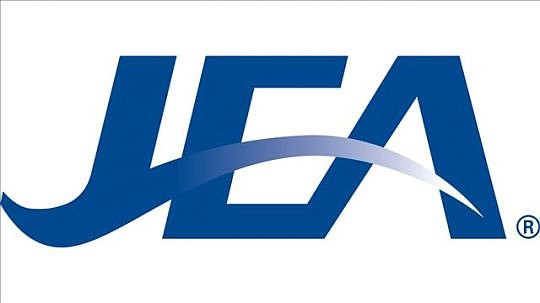
Four of the state’s largest providers of electricity were in Tallahassee this week proposing that energy-efficiency programs, such as consumer rebates for power-saving appliances and solar panels, should be scaled back.
Florida Power & Light, Duke Energy Florida, Tampa Electric Co. and Gulf Power Co. told the Florida Public Service Commission that demand for conservation programs has declined and they are becoming less cost-effective.
JEA also was there, not to lobby for changes, but because the amount of electricity it produces each year comes under the jurisdiction of the Florida Energy Efficiency and Conservation Act.
JEA, therefore, must provide information about its conservation programs to the commission.
The seven utilities subject to the act are the five already noted plus Orlando Utilities Co. and Tampa Electric Co. Of the seven, five are owned by investors, while JEA and Orlando Utilities Co. are not-for-profit, community-owned utilities, and do not have to return a dividend to stockholders.
That puts utilities owned by the public in a different category. While they must present their energy conservation plans to the PSC, their conservation programs aren’t governed by the state, said commission spokeswoman Bev DeMello.
JEA develops its own energy conservation programs, but consistent with state goals, said Richard Vento, director of customer solutions and market development.
He said the local programs are designed by comparing the cost of a program to its benefits.
In 2008, JEA began offering residential customers discounts and rebates in compact fluorescent and light emitting diode light bulbs and on Energy Star-rated appliances. Since the program began, more than 4.3 million bulbs have been purchased along with more than 25,000 qualifying appliances.
JEA began offering in 2010 home-energy upgrade rebates on HVAC systems, insulation, window tinting, duct repair and solar water heaters. More than 43,000 rebates have been collected by customers since the program debuted.
A customer portal on JEA’s website went online in 2013 that allows customers to analyze their utility bills and monitor their energy usage.
More than 110,000 customers have analyzed their bills and more than 11,000 have conducted online energy assessment profiles, which can help determine proper energy efficiency upgrades.
In addition, JEA technicians perform about 5,000 on-site energy efficiency assessments each year.
“It is a broad spectrum of programs,” said Vento.
JEA spokeswoman Gerri Boyce said energy-efficiency programs have been started and ended over the years based on how cost-effective each program is for customers, including those who do not take advantage of them.
“It’s a work in progress,” she said.
Vento said the program presentation to the commission occurs every five years when the standards are reviewed and each year, JEA has maintained its program independence.
Additional hearings are scheduled by the PSC July 30-31. The commission isn’t expected to make a ruling on the requests until October, when the energy conservation goals for 2015-24 will be established.
The utilities are seeking amendments to the provisions of the statute, which was enacted by the Legislature in 1980.
The act emphasizes reducing the growth rates of peak demand in seasonal peak demand, controlling and reducing the growth of electricity consumption and the reducing consumption of scarce resources such as fossil fuels.
The Legislature amended the act in 2008 to place greater emphasis on cost-effective conservation measures and renewable energy systems.
@DRMaxDowntown
(904) 356-2466